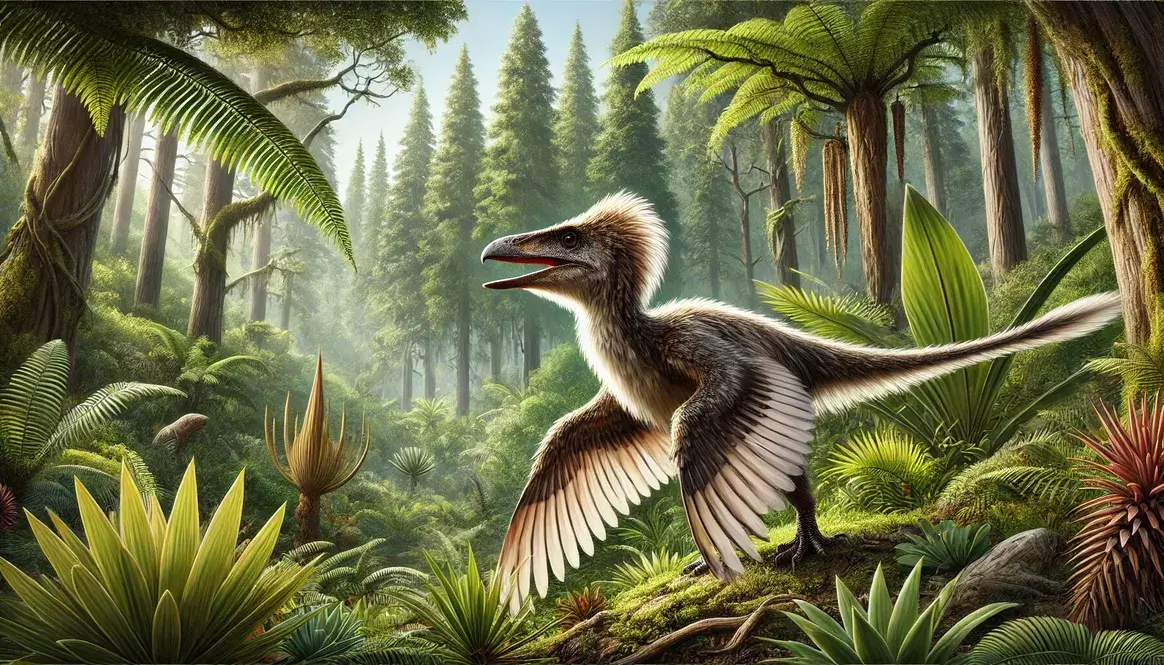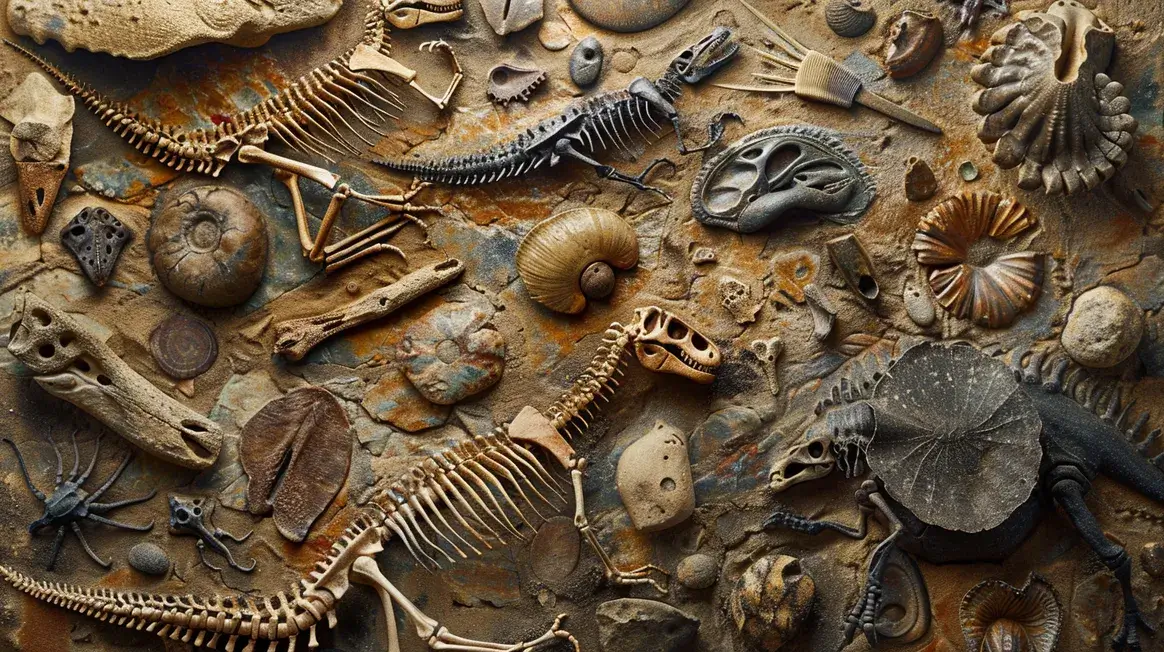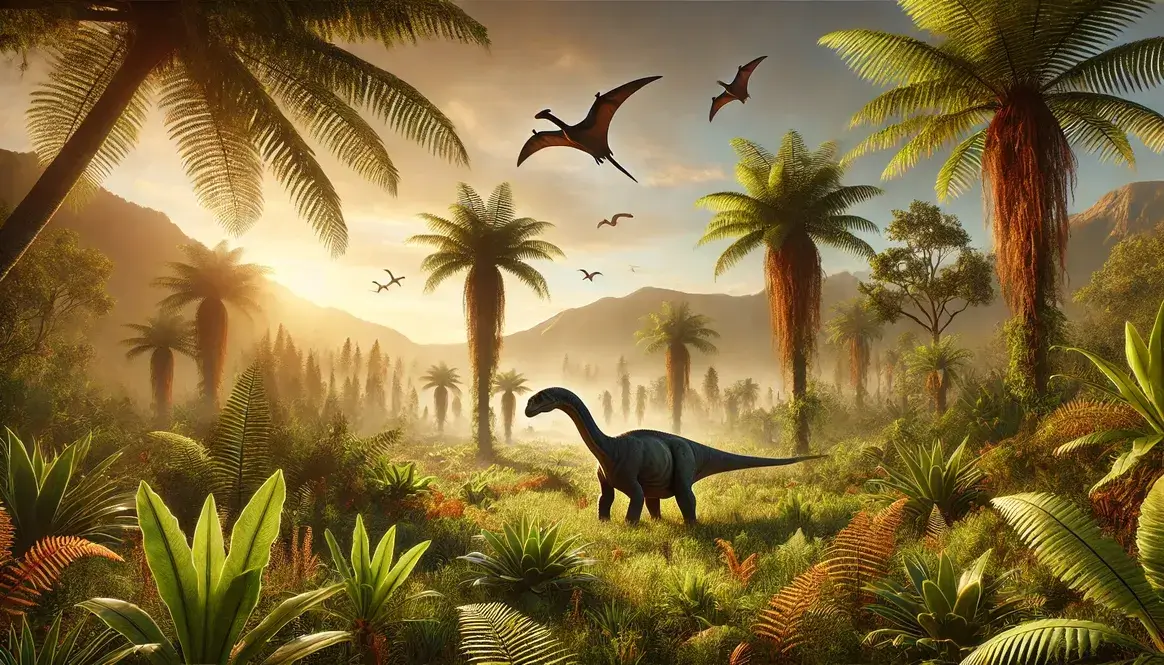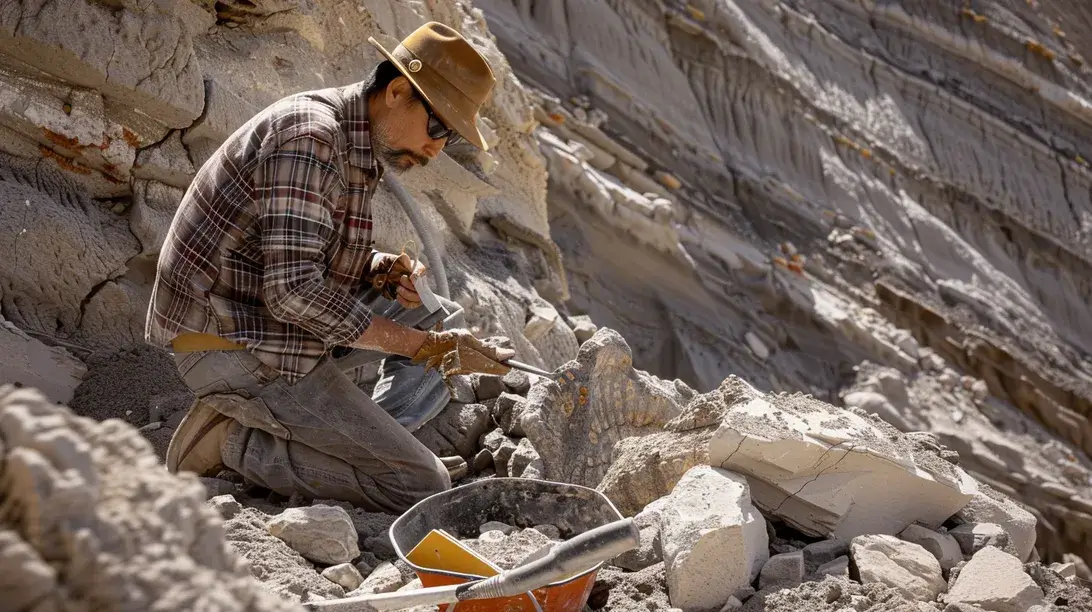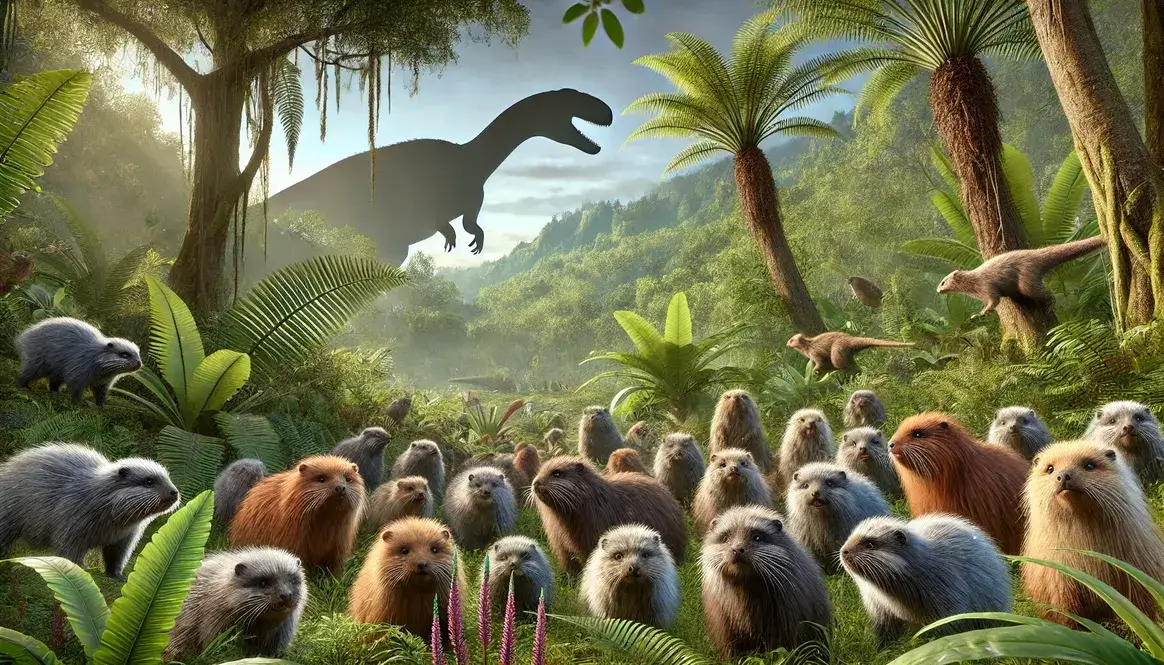Archaeopteryx is a remarkable creature that shook the scientific world when it was discovered. This ancient animal, which lived about 150 million years ago during the Late Jurassic period, has features of both dinosaurs and birds. It’s often called a “transitional fossil” because it shows how one group of animals (dinosaurs) evolved into another (birds).
Archaeopteryx Discovery and Early Significance
The story of Archaeopteryx is as fascinating as the creature itself. Its discovery came at a pivotal time in scientific history and sparked debates that continue to this day. Let’s dive into how this extraordinary fossil came to light and why it caused such a stir in the scientific community.
The First Fossil Find
The story of Archaeopteryx begins in 1861 near Solnhofen, Germany. A single feather fossil was found in limestone quarries famous for their exceptionally well-preserved fossils. This discovery was exciting, but the best was yet to come.
Later that same year, a nearly complete skeleton was unearthed. At first glance, it looked like a small dinosaur. But upon closer inspection, paleontologists noticed something extraordinary – impressions of feathers around the bones!
This fossil caused quite a stir. Charles Darwin had published “On the Origin of Species” just two years earlier, and scientists were debating his ideas about evolution. Archaeopteryx seemed to provide solid evidence for Darwin’s theory, showing a creature that was part reptile, part bird.
Subsequent Discoveries
Since that first amazing find, paleontologists have discovered 11 more Archaeopteryx specimens. Each new fossil has added to our understanding of this ancient creature:
| Year | Specimen Name | Key Contribution |
|---|---|---|
| 1876 | Berlin Specimen | Showed clear feather impressions |
| 1955 | Maxberg Specimen | Revealed more about wing structure |
| 1970 | Eichstätt Specimen | Provided details on skull anatomy |
| 2011 | Thermopolis Specimen | Showed evidence of colored feathers |
These discoveries have helped scientists piece together a clearer picture of Archaeopteryx and its place in the dinosaur family tree.
Anatomical Features of Archaeopteryx
What makes Archaeopteryx so special? It’s all in the details of its body structure. This creature had a unique mix of features that we typically associate with either dinosaurs or birds. Let’s take a closer look at what made Archaeopteryx such a distinctive animal.
Dinosaur-like Characteristics
Archaeopteryx had several features that linked it to its dinosaur ancestors:
- Teeth: Unlike modern birds, Archaeopteryx had a mouth full of sharp teeth, perfect for catching and eating small prey.
- Long, bony tail: Modern birds have short tails made mostly of feathers, but Archaeopteryx had a long tail with many vertebrae, like its dinosaur relatives.
- Clawed fingers: Each wing had three fingers with sharp claws, similar to those of theropod dinosaurs.
These features show that Archaeopteryx was closely related to small, meat-eating dinosaurs called theropods. In fact, it’s now considered part of this group!
Bird-like Features
But Archaeopteryx also had characteristics that we associate with birds:
- Feathers: The most striking bird-like feature of Archaeopteryx was its feathers. These weren’t just simple structures – they were asymmetrical flight feathers, similar to those of modern flying birds.
- Wishbone: Archaeopteryx had a furcula, or wishbone, which is found in modern birds and helps strengthen the chest for flight.
- Bird-like skull: While it had teeth, the overall shape of Archaeopteryx’s skull was more bird-like than dinosaur-like.
These features show that Archaeopteryx had already developed many bird-like traits, even though it lived long before modern birds evolved.
The combination of dinosaur and bird features in Archaeopteryx provides strong evidence for the evolutionary link between these two groups of animals. It helps us understand how the diverse group of Jurassic dinosaurs gradually gave rise to the birds we see today.
Archaeopteryx’s Place in Evolution
Archaeopteryx holds a special spot in the story of life on Earth. It’s not just an interesting fossil – it’s a key piece of evidence that helps us understand how evolution works. Let’s explore why this ancient creature is so important to our understanding of how species change over time.
Transitional Fossil Status
Archaeopteryx is what scientists call a “transitional fossil.” This means it shows features of both an ancestral group (dinosaurs) and a descendant group (birds). It’s like catching evolution in the act!
Here’s why Archaeopteryx is such a great example of a transitional form:
- Mix of features: As we’ve seen, it has both dinosaur-like and bird-like characteristics.
- Right time, right place: It lived at a time when birds were just starting to evolve from dinosaurs.
- Fills a gap: It helps us understand how features like feathers and flight evolved.
Archaeopteryx played a big role in supporting Charles Darwin’s theory of evolution. When it was discovered, Darwin’s ideas were still new and controversial. But here was clear evidence of a creature that seemed to be halfway between dinosaurs and birds – just the kind of “missing link” that Darwin’s theory predicted should exist.
Relationship to Other Feathered Dinosaurs
Since the discovery of Archaeopteryx, paleontologists have found many other feathered dinosaurs. This has helped us better understand where Archaeopteryx fits in the dinosaur family tree.
Here’s a comparison of Archaeopteryx with some other feathered dinosaurs:
| Dinosaur | Age (Million Years Ago) | Key Features |
|---|---|---|
| Archaeopteryx | 150 | Feathers, teeth, clawed fingers |
| Microraptor | 125 | Four wings, could likely glide |
| Velociraptor | 75 | Feathers, more dinosaur-like body |
| Anchiornis | 160 | Older than Archaeopteryx, had four wings |
Archaeopteryx isn’t the oldest known feathered dinosaur (that’s Anchiornis), but it’s still one of the most bird-like of the early feathered dinosaurs. It sits near the base of the bird branch of the dinosaur family tree, close to where birds split off from other theropod dinosaurs.
This position makes Archaeopteryx crucial for understanding the evolution of birds from their dinosaur ancestors. It shows us what early birds might have looked like and helps us trace the development of bird-like features.
The Flight Debate
One of the most exciting questions about Archaeopteryx is whether it could fly. This debate has been going on since the fossil was first discovered, and new research keeps adding to our understanding. Let’s look at both sides of this fascinating discussion.
Arguments for Flying Abilities
Some scientists believe Archaeopteryx could fly, at least a little bit. Here’s why:
- Feather structure: Archaeopteryx had asymmetrical flight feathers, similar to modern flying birds. This shape helps create lift during flight.
- Wishbone: The presence of a wishbone (furcula) suggests Archaeopteryx had strong chest muscles, which are needed for flight.
- Brain structure: CT scans of Archaeopteryx skulls show it had a large cerebellum, the part of the brain that coordinates movement. This might have helped it control itself in the air.
Comparisons with modern birds also support the idea that Archaeopteryx could fly. Its wings were similar in shape to those of modern woodland birds that fly in short bursts between trees.
Arguments Against Full Flight
However, other scientists argue that Archaeopteryx probably couldn’t fly like modern birds. They point to several limitations:
- Arm strength: Archaeopteryx’s arm bones weren’t as strong as those of modern flying birds. They might not have been able to handle the stress of flapping flight.
- Shoulder joint: The shoulder joint of Archaeopteryx wasn’t well-suited for the up-and-down motion of wing flapping.
- Lack of key flight muscles: Archaeopteryx might have lacked some of the key flight muscles found in modern birds.
Because of these limitations, some researchers think Archaeopteryx might have been a glider rather than a true flyer. It might have climbed trees and glided from branch to branch, or used its wings to help it run up inclines.
This debate shows how much we’re still learning about Archaeopteryx and early bird evolution. Each new discovery and study adds to our understanding of how flight evolved in the diverse ecosystems of the Jurassic period.
Archaeopteryx’s Jurassic World
Step back in time 150 million years, and you’d find yourself in a world very different from today’s Germany. This was Archaeopteryx’s home – a tropical paradise of islands, warm seas, and diverse life.
Habitat and Environment
Imagine standing on a beach, surrounded by warm, shallow waters. You’re on one of many islands in an archipelago, with coral reefs and calm lagoons stretching as far as the eye can see. The air is warm and humid, filled with the calls of strange creatures.
This tropical setting was home to a variety of animals:
- In the water: Fish, squid, and marine reptiles like ichthyosaurs swam in the lagoons.
- In the air: Pterosaurs of all sizes soared overhead.
- On land: Small dinosaurs scampered about, while tiny mammals hid in the undergrowth.
Lush vegetation covered the islands, providing food and shelter. Conifers, cycads, and ferns created a landscape both familiar and alien to our modern eyes.
Ecological Role
What was life like for Archaeopteryx in this prehistoric world? Let’s piece together the clues:
- Diet: Sharp teeth and claws suggest Archaeopteryx was a carnivore, likely feasting on insects, small lizards, and early mammals.
- Hunting style: Picture Archaeopteryx moving swiftly through the trees or along the ground, using its wings for balance and quick maneuvers as it chased down prey.
- Nesting: Like modern birds, Archaeopteryx probably laid eggs. But where? In trees? On the ground? We can only speculate.
But life wasn’t easy for our feathered friend. Larger dinosaurs, some pterosaurs, and even ancient crocodile relatives all posed threats. Archaeopteryx had to be alert and agile to survive in this dangerous world.
Legacy and Continued Research
Archaeopteryx’s impact extends far beyond its Jurassic home, shaping our understanding of evolution and inspiring ongoing scientific inquiry.
Impact on Paleontology and Evolutionary Biology
When Archaeopteryx was discovered, it was like finding a missing puzzle piece in the story of life. Here’s why it matters:
- Evolution in action: Archaeopteryx showed a clear link between dinosaurs and birds, providing strong support for Darwin’s theory of evolution.
- Transition insights: It helped scientists understand how major evolutionary changes can occur.
- Bird beginnings: Archaeopteryx gave us our first real look at what early birds were like, revolutionizing our understanding of bird evolution.
This discovery changed paleontology itself, highlighting the importance of transitional fossils and the need to pay attention to small details that can reveal big evolutionary changes.
Recent Studies and New Discoveries
The story of Archaeopteryx isn’t over. New technologies are helping us uncover more secrets:
- CT scanning has revealed details of Archaeopteryx’s brain structure, suggesting it had the neural capabilities for flight.
- Feather analysis has shown that Archaeopteryx might have had black wing feathers. Imagine this crow-sized creature with sleek, black wings!
- Bone structure studies are giving us clues about how Archaeopteryx grew and developed.
Recent discoveries of other feathered dinosaurs have also shed new light on Archaeopteryx. For example, four-winged dinosaurs like Microraptor have led to new theories about how flight might have evolved.
These ongoing studies show that Archaeopteryx, despite being 150 million years old, still has secrets to reveal. As we develop new technologies and find more fossils, we’ll continue to learn from this amazing creature that bridges the gap between the diverse world of Jurassic dinosaurs and the birds we see today.

